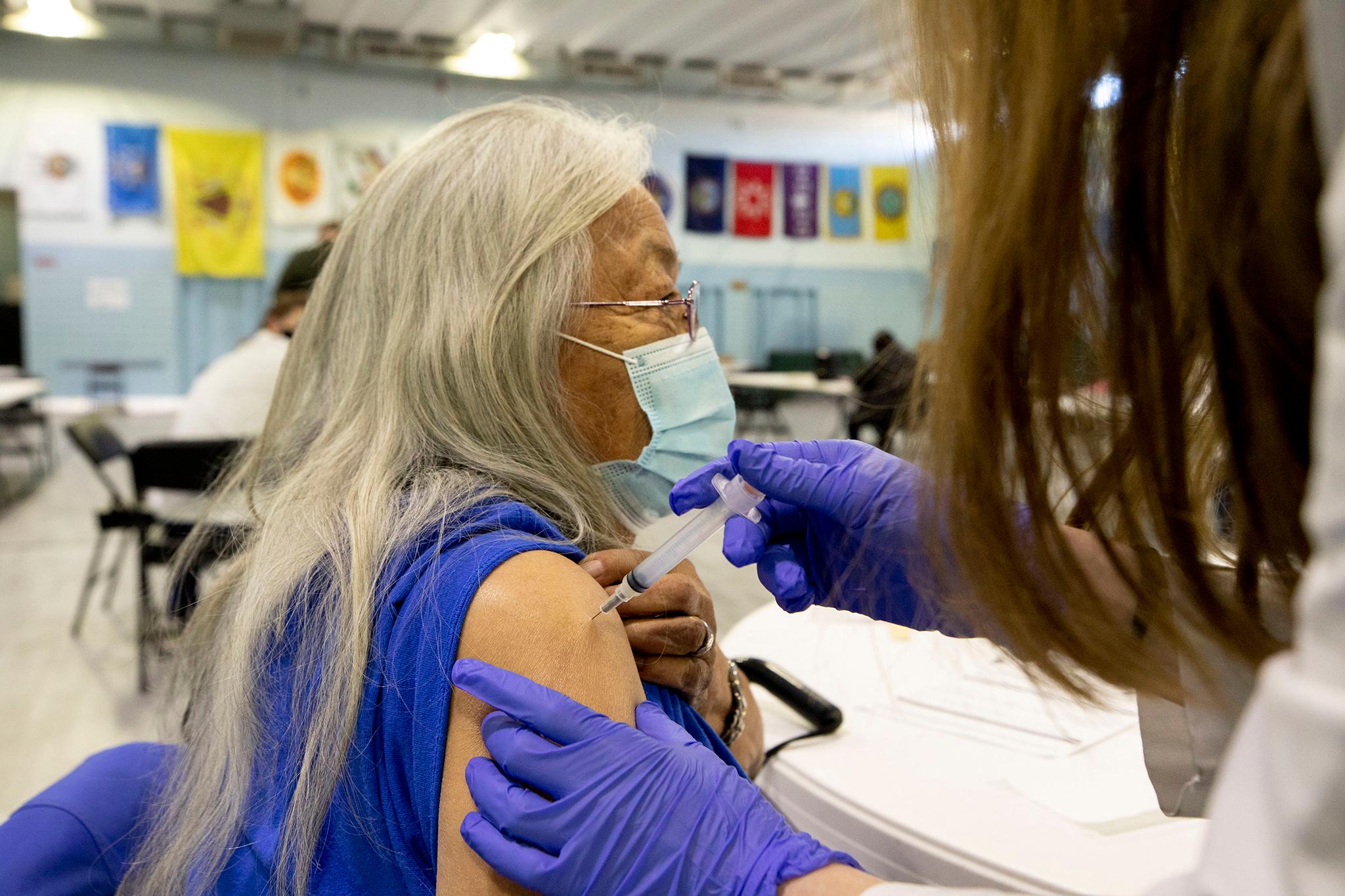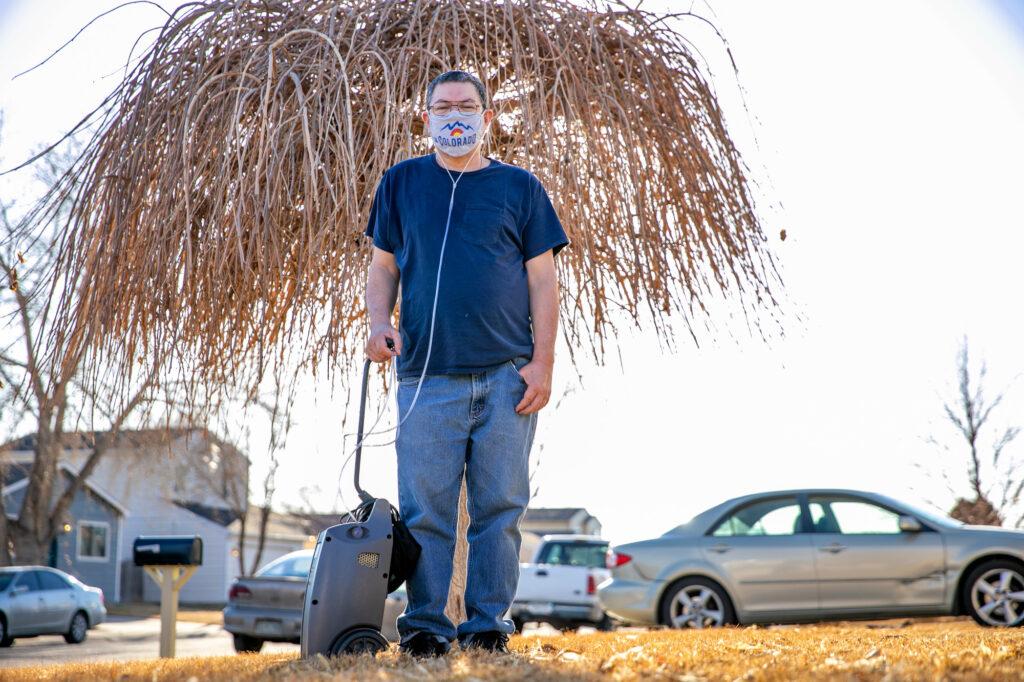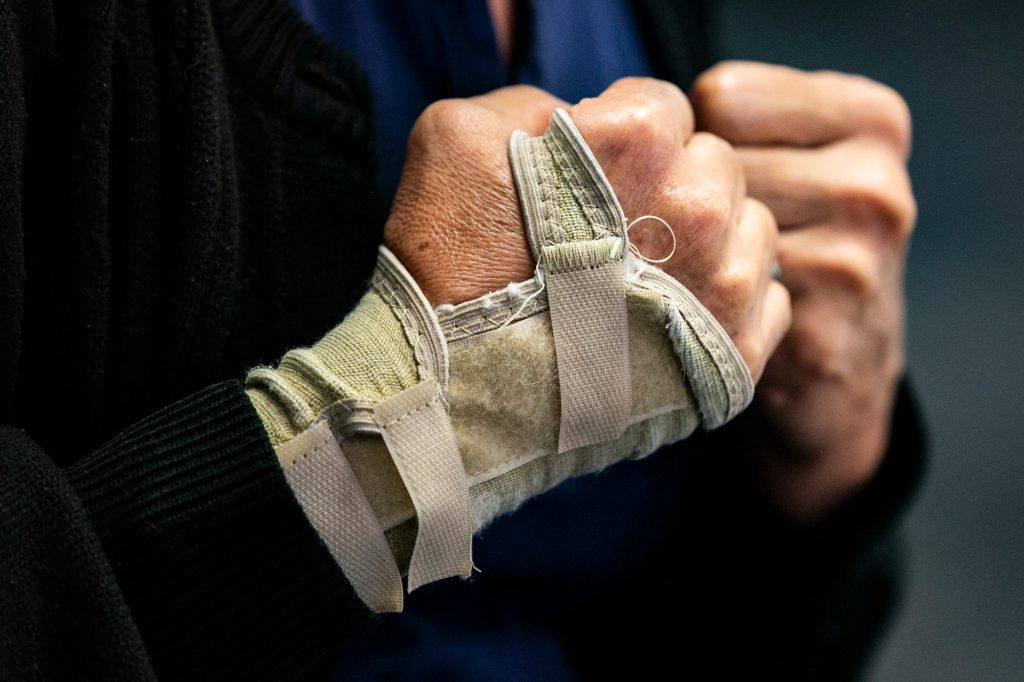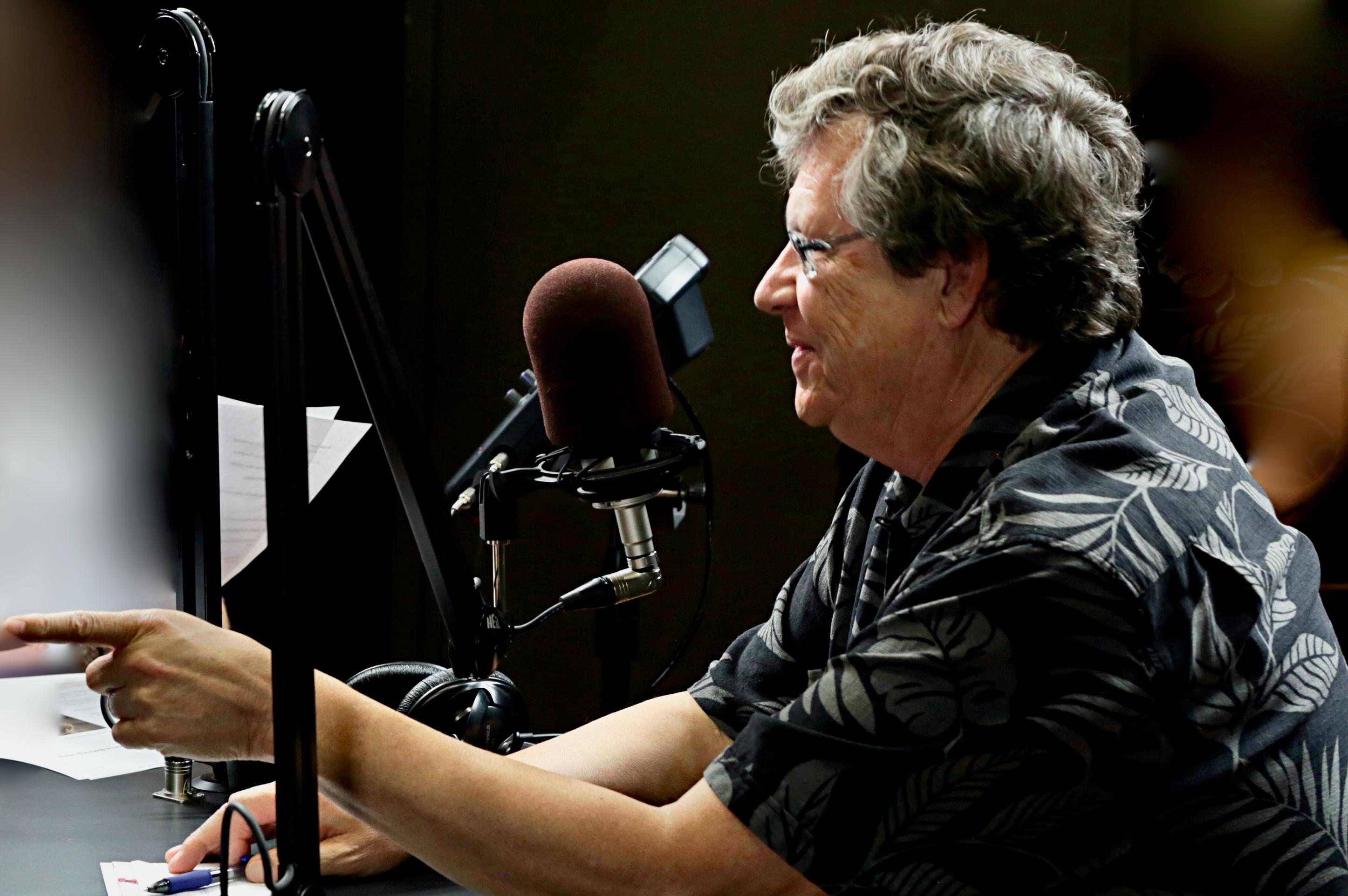
All along the Front Range during the pandemic, demographics drew lines between sickness and health.
Longtime Denver physician Dr. Terri Richardson, with the Colorado Black Health Collaborative, said troubling trends emerged in the earliest days of the pandemic.
“Everything, you know, it goes along the social, economic and people of color lines,” said Richardson, a recently retired internist with Kaiser Permanente. “The stories are when it was the COVID infections and testing, when it was a vaccine, the maps all look the same. You could have just superimposed all the maps and they looked the same.”
A new study provides more evidence in striking terms. It found that neighborhoods with the most people of color, fewest primary English speakers, and lowest levels of education were hardest hit by the pandemic.
The Colorado Health Institute tracked census-level COVID-19 diagnoses in seven Denver metro counties, plus parts of Larimer and Weld. It appears to be the first examination of the crisis’ impact at a more granular level.
In the hardest-hit spots, the rate of those diagnoses was 10 times greater than those that did best. A neighborhood with the highest concentrations of COVID-19 diagnoses might be separated by just a 10-minute drive from one largely untouched by the virus.
“The data is stark and compelling, and it affirms what my constituents have survived over the past 18 months,” said state Sen. Julie Gonzales, who represents a heavily Latino district in central, west and north Denver. “Crisis exacerbates inequality, and the health and economic impacts of the pandemic hit harder in working-class communities of color.”
The institute's Joe Hanel says the trend held true outside of Denver too in places like Fort Lupton, east of Longmont, and neighborhoods north, east and south of Greeley.
“There are neighborhoods where more people are engaged in essential work, more people live in crowded housing conditions,” Hanel said. “What we see here is COVID following socioeconomic patterns.”
Life expectancy fell this year, especially among communities of color
The CHI report comes on the heels of news last month that so many Coloradans died of COVID-19 and related causes, including drug overdoses, that life expectancy statistics fell dramatically this past year.
The drop was most alarming among communities of color, where enough Hispanic and Black residents died in the pandemic that both groups’ life expectancy statistics fell by about four years. The drop among white people in Colorado was 1.4 years.
The state health department has been providing demographic information on infections and deaths since the early days of the pandemic, so it has long been known that infections disproportionately impacted Hispanic residents. They make up 22 percent of the state’s population, and 26 percent of the cases.
Black residents statewide are represented in case data in rough proportion to their 3.92 percent representation in the population.
However, the ethnicity and race of more than 21 percent of those infected since March 2019 is unknown.

Essential jobs, multi-generational households and health care disparities increased COVID-19 risks.
But the new data drills down far deeper into Front Range neighborhoods by census tract. And it cross-references COVID-19 data with three key underlying health indicators: educational attainment, use of English language at home and the percentage of people of color living in that area.
The study adds more context to what’s known about other factors, like the combination of front-line essential jobs, multi-generational crowded households, and lack of resources that combined to make COVID-19 spread more easily through some neighborhoods.
In Weld County, around Greeley is a crescent of neighborhoods not far from a JBS meat-processing plant where workers stood close together in essential jobs, leading to high-profile outbreaks and deaths from COVID-19.
CHI’s study found each of those census tracts had COVID-19 diagnoses that were way above the average of other precincts in the study, in some cases nearly double. Based on census data, roughly a third of the residents living in those same neighborhoods have less than a high school education. Most residents there are people of color and live in homes where English is not spoken.
“I think what the data are basically showing is that, by neighborhood, cases are higher in neighborhoods where people live in closer contact,” said Dr. Lilia Cervantes, an associate professor in the department of medicine at Denver Health.
Separate from the CHI study, Cervantes did a quantitative analysis looking at all individuals who had been hospitalized in Denver County with COVID-19 between March 6 and Oct. 6. It found that often two generations of family members were living in the same household. Many of them are part of the essential workforce.
Many of them don't have the opportunity to work remotely from home. They have to use public transportation. And many of these people are also not given personal protective equipment at work, she said.
“These are all sort of different exposures (to the virus) because of living in poverty and the types of jobs that they have,” Cervantes said.
Plus, those people also have a higher prevalence of conditions that increase the risk of COVID because of social determinants of health. These include stress, a lack of healthy foods and grocery stores in their neighborhoods, and access to parks, sidewalks and similar amenities.
“So they have the co-morbidities that create an environment for worst COVID-19 outcomes, but are also more likely to be exposed because of their lived experience in their neighborhood,” Cervantes said.
Take a closer look at the Colorado Health Institute report and maps:
Not every neighborhood can 'simply return to normal'
Denver's Westwood neighborhood, southwest of downtown, had among the highest COVID-19 concentrations in the study — ranging from 195 percent to 266 percent above the average precinct in the study. About 9 of 10 Westwood residents identify as non-white, making it one of the neighborhoods with the greatest ethnic and racial diversity.
“I am grateful to the Colorado Health Institute for creating these maps,” said Gonzales, who represents Westwood.
Her family lost three members to COVID-19 complications and held a triple funeral for her mother-in-law, her husband's uncle and husband's grandfather early in 2021, at the peak of the pandemic. They lived in Northglenn.
“Let us use this devastating data to guide our recovery and healing in order to ensure better outcomes for all Coloradans, regardless of how much you earn or where you live,” she said.
She said before the state declares victory over the pandemic or shifts attention to an economic comeback, Colorado should focus on families who lost loved ones to the pandemic to better understand what their needs are, and also “listen to the communities who survived these multiple crises of the pandemic itself and the economic crisis — in order to understand the inequities that led to such vastly disparate outcomes between groups of Coloradans. We cannot simply return to normal.”
Denver’s Montbello also had among the highest COVID-19 concentrations identified in the study — 214 percent of average. Montbello ranks highest among census tracts examined with fewest high school graduations, with four in every 10 residents having less than a high school diploma.
More affluent spots nearby, like Central Park (formerly Stapleton), Highlands Ranch, Ken Caryl, Platt Park and Cherry Hills, had some of the lowest.
The latter is among the least diverse with less than 10 percent of people identifying as non-white. Cherry Hills had 62 percent of the average COVID-19 cases per precinct.
Platt Park is an affluent and mostly white neighborhood near to shops and restaurants on Old South Pearl Street. CHI’s review of census tract data found it had just 32 percent of the average per precinct COVID-19 diagnoses. That put it in the most favorable spot of the index within the metro area, except for tracts where the data was not available.
Hanel said the contrast told a crucial, if expected, pandemic story. Those with the ability to avoid risky situations and work from home were better able to avoid the dangerous and potentially deadly virus. But their less affluent neighbors — literally across the tracks in some cases — suffered the brunt of the pandemic.
Cervantes interviewed 60 Latinx adults who survived COVID-19 hospitalization between May and September of 2020 in Denver and San Francisco. That research was published in JAMA.
The people she talked to reported hearing misinformation about COVID-19, felt the virus compounded existing social disadvantages, and risked infection because of the need to work. They hesitated to seek hospital care because of immigration and economic concerns.
Forty percent reported a household income of less than $25,000, 63 percent reported a below high school level education, and 46 percent reported losing their job due to COVID-19.
“I mean, it's awful, you know, they have zero safeguards,” Cervantes said.

How the Colorado Health Institute report came together
To create its report, the Colorado Health Institute, a non-partisan nonprofit group used a dataset of COVID-19 cases from April through December 2020. The data came from patients in a network of 11 health care organizations. The Colorado Health Observational Regional Data Service (CHORDS) is a partnership of health providers and researchers, which uses anonymized medical records to track health trends by census tract and other demographic measures.
Hanel pointed out that CHORDS data do not allow CHI to say precisely how many people in a given census tract had COVID-19, because not all medical providers who may have diagnosed patients with COVID-19 participate in CHORDS, and not all people who had COVID-19 were formally diagnosed by a health care provider. Instead, its map shows an index that compares census tracts to each other in terms of the relative rate of COVID-19 diagnoses.
CHORDS includes data from the counties of Adams, Arapahoe, Boulder, Broomfield, Denver, Douglas, Jefferson, Larimer, and Weld. Other counties were not included in the analysis. Hanel said the study provided a robust sample of the area's overall population.
The network partners care for about one-quarter of the population in this area, and the COVID-19 diagnosis data accounts for about 8 percent of the cases documented by the Colorado Department of Public Health and Environment.
This discrepancy may exist because people who show up in the CHORDS data had illnesses serious enough to cause them to seek medical care, Hanel said CHI’s mapping spotlights a pattern well known in Denver public health and medical research: the inverted (or upside down) L. It runs essentially along Federal Boulevard in west Denver and through the city’s northern areas east to Montbello.
These locations have historically seen a “disinvestment in infrastructure and services and by industrial zones with increased environmental health concerns,” the report notes and a variety of health outcomes are worse there.
“COVID-19 was no different,” the report states.









